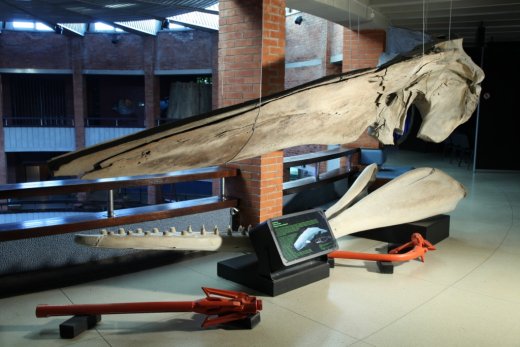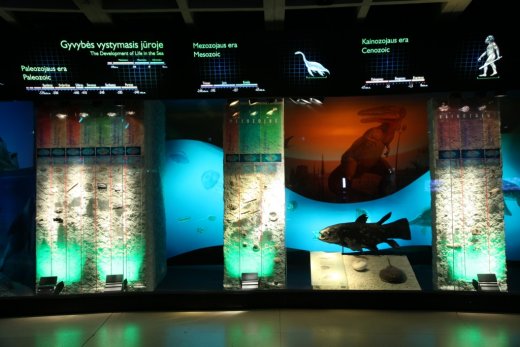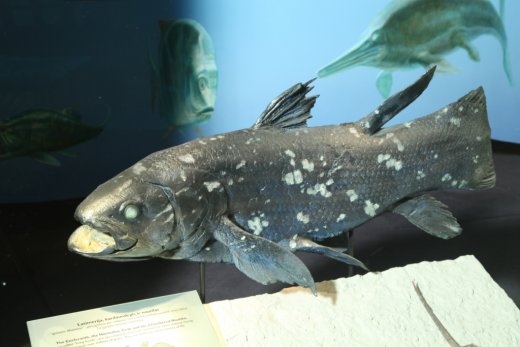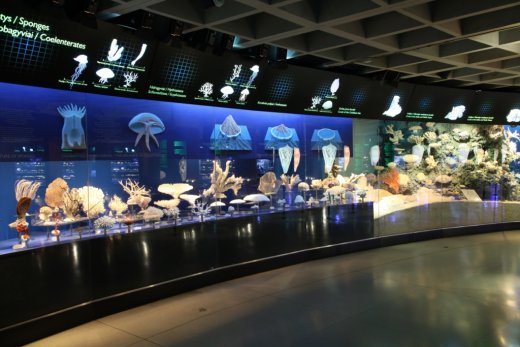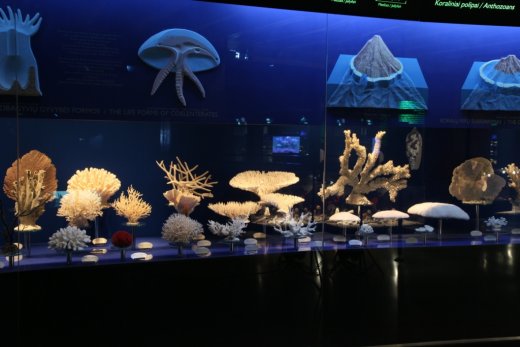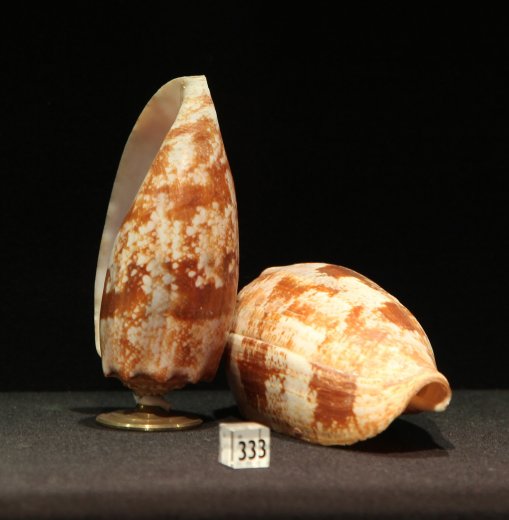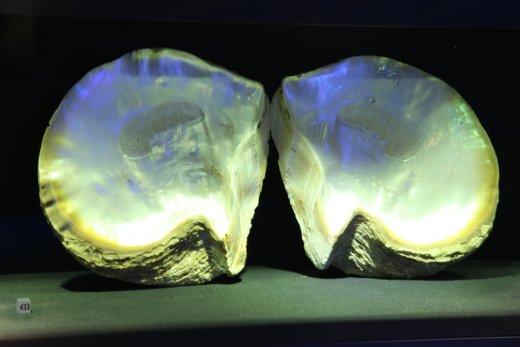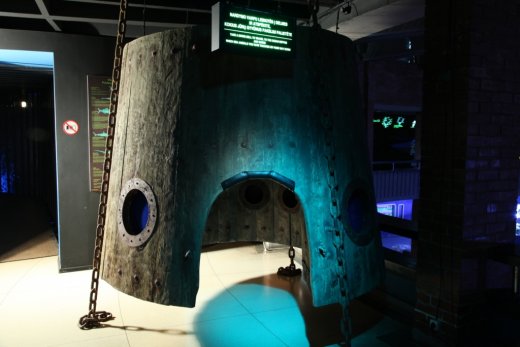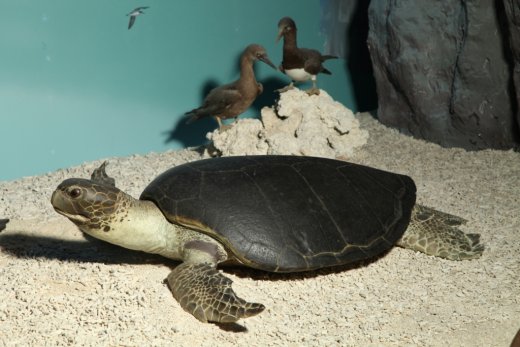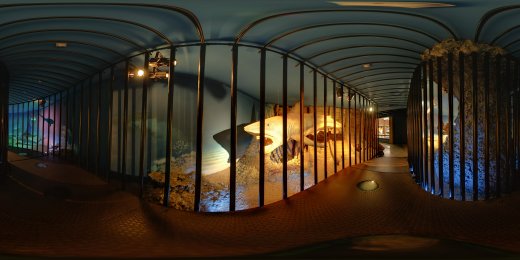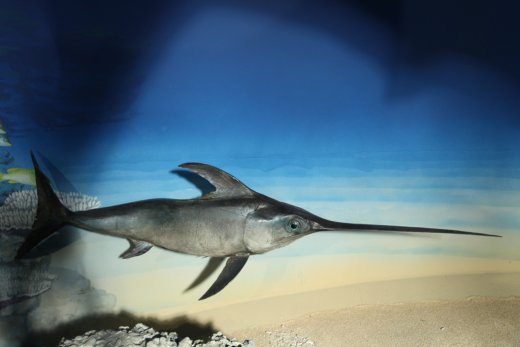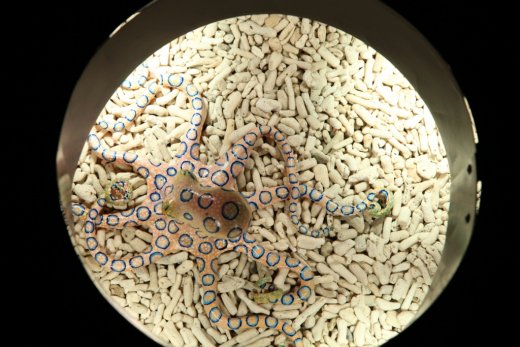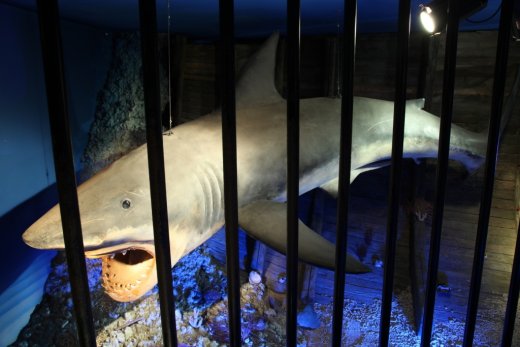Sea Fauna exhibitions

Welcome to explore the sea fauna exhibition, to see the collection of mollusc shells and exhibitions of sea birds, predatory and dangerous sea animals and the development of life at sea.
Millions of various plants and animals live on the Earth. The human being attempted to answer a question of where did they all come from throughout several hundreds of years. The sun and the planets, including the Earth, most probably, were formed of dust and collected debris 10 billion years ago. First, it was very hot on the Earth; it was surrounded by dense, thick steam. As the Earth was cooling down, steam of water was condensing and rain started. Over hundreds of millions of years, a large amount of rainfall formed the world ocean. When the primitive cell occurred, it found its food exactly in the water.
The life on the Earth is characteristic of surprising diversity. Every plant and animal dwells in its own natural habitat. In 1859, an English naturalist Charles Darwin created the theory of evolution. He proposed an idea that, over millions of years, species of plants and animals were evolving by adapting to the environment. Those animals and plants which adapted better survived and thrived; whereas others became extinct or arranged new habitats. Thus, in Darwin’s view, millions of various species of plants and animals originated.
Throughout the entire history of the Earth and during a relatively short period of time, many species became extinct. The largest massive extinction was in the Permian–Triassic extinction event which took place approximately 245 million years ago. Approximately 65 million years ago, in the Cretaceous period, dinosaurs became extinct. Nobody knows what was the cause of these events. As some scientists declare, the extinction of the Cretaceous period happened after a climate change which was likely caused by a fallen meteorite.
Expositions “The Sea Is the Cradle of Life” and “The Evolution of Life in the Sea” demonstrate how the life was evolving in the sea, what organisms, their forms can be found in the nature. The exposition aims at demonstrating as many forms, species of life in the sea as possible; therefore, you will find mouldings, moulages and stuffed animals here.
What Are Corals?
The largest living entity on our planet is not the Blue whale or African elephant, but the Great Barrier Reef in Australia. It stretches for about 2,300 kilometres along the northern coast of Australia, is about 20 million years old and is so large that it can be seen from space.
The coral reef is made up of many layers of calcareous bodies of already dead stony corals and its surface is covered with colourful corals of all ages and species.
Only in the 18th century microscopic examination of corals confirmed that, yes, corals are animals. They are invertebrates belonging to the coelenterates invertebrate type.
Most corals are colonial, meaning that each coral is made up of many individual polyps, each polyp having an opening surrounded by a set of tentacles that at the same time function as the mouth and the anus.
Despite their wide variety, corals can be divided into two main types – stony, or hard, and soft corals. Soft corals have a flexible skeleton, while the calcium carbonate skeleton of stony corals is solid. Corals eat zooplankton, but it is also important to note that many of them also feed on photosynthesis products. Absolutely all coral species are protected.
The Collection of Mollusc Seashells
Molluscs are multicellular invertebrate, spineless animals, usually having an external shell. There exist more than 100,000 species of molluscs. Some of them reside on the land, some live in salt water, whereas others are freshwater inhabitants. Molluscs are also divided into gastropods, cephalopods and bivalves. Gastropods are the most numerous – they comprise almost 80 percent of all molluscs. Cephalopods – octopuses and squids – have the best developed nervous system. The largest molluscs in the world are also cephalopods – these are gigantic squids growing as big as more than 10 metres in length.
While exploring one of the largest collections of mollusc seashells in Europe, you can find Lithuanian names there – Marginella adamkusi, Chryseofusus kazdailisi, Afer lansbergisi, Haustellum danilai and Marginella henrikasi. The names to all of them were given by a resident of Klaipėda city, a famous collector of seashells Henrikas Danila. Names can be given to seashells only by a special person – Henrikas Danila is the discoverer of the sea snails living in the mentioned seashells.
